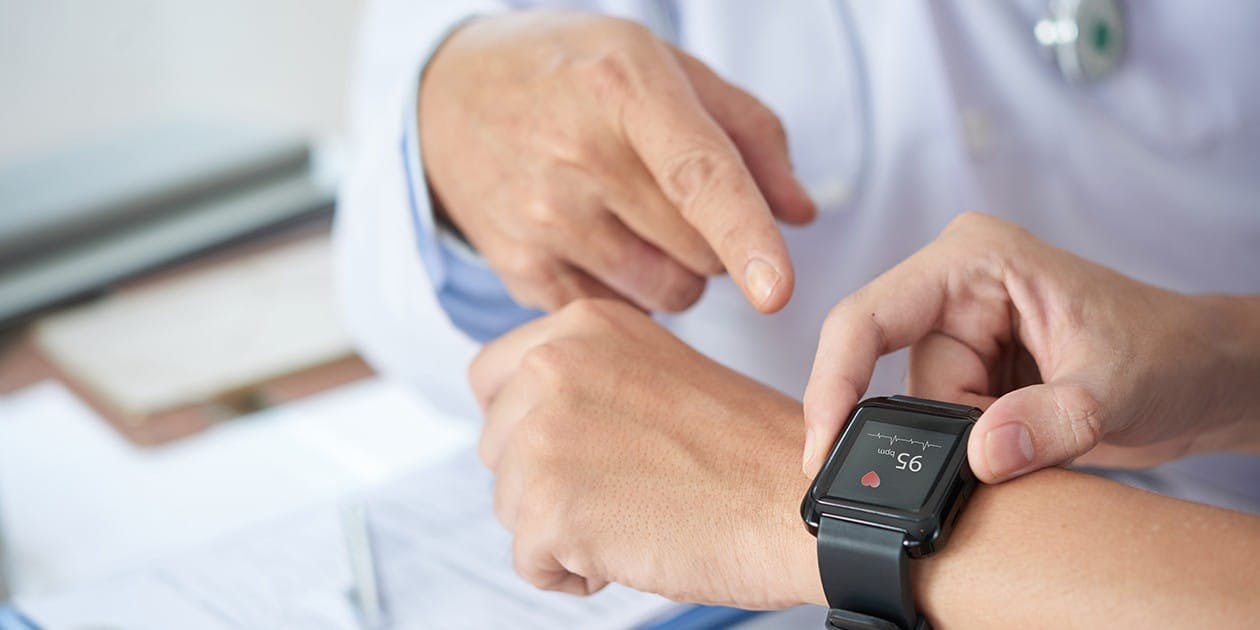
Wearable sensors and digital technology offer great potential in understanding the patient experience in clinical trials. The collection of rich data, captured in real-world settings, provides deep insights into our understanding of medical treatment effects. With so many factors to consider, however, it is no simple task to make this choice. Here are some key considerations for getting started using wearable sensor data collection for clinical research.
Common Direct Physiologic Measures from Wearable Sensors
For all the hyperbole regarding the proliferation of wearable sensors in clinical trials and in our lives more generally, there are still relatively few direct physiologic measures we can make using these instruments.
A few more include accelerations (g-forces), temperature (core and skin), skin conductivity, pulse-ox, and continuous blood glucose. Perhaps that seems like a long list, but there is nothing particularly exotic listed here. These are all types of measures that have been around for decades, so what is really new?
Wearable Sensors Provide Real-World Insights
The opportunity for greater patient engagement has positively impacted the adoption of wearable sensors in clinical trials, healthcare research, and delivery. We can now continuously record physiologic measurements and do this during the patient’s routine everyday life rather than in-clinic. Ideally, we can add rich contextual information in the form of ePRO and eCOA to capture subjective data during clinically significant events.
The combination of physiologic data with subjective information from ePRO/eCOA data promises unprecedented new insights into each individual’s clinical functioning as they respond to an investigational drug, device, or therapy.
How to Approach Sensor Selection
Align Data and Device
Define what data you want to collect to test your hypothesis. Research which wearable sensors may be capable of meeting your data objectives.
Consider Patient Burden
There may be a sensor that collects the exact data a researcher wants, but it may not be practical for the study population, for example, a pediatric population. Consider what a patient may comfortably tolerate and whether they are able to adhere to the study protocol without significantly altering their behavior. Perhaps the only instruction to the patient is to attempt to ignore the sensor completely, and ideally interact with it as little as possible. Can they reasonably do that, or will your sensor choice require regular intervention by a caregiver or clinical staff?
Don’t Get Hung Up on Sensor Regulatory Approval
When thinking about the choices of wearable sensors available today, they can seem myriad and potentially confusing. It’s actually not as complicated as it appears on the surface because of the hundreds of companies selling “wearable solutions,” probably less than 10% of them are real, commercially available, reliable, and well-supported offerings.
Fewer still will have any regulatory approval, and likely none will be approved for the exact purpose or patient population you intend for it in the clinical trial. Just because a sensor doesn’t have regulatory approval doesn’t mean you can’t consider it. With the right protocol design, data collection plan, and analysis, clinical researchers can capture excellent data from sensors that are not approved for medical use. Data collected with this care and discipline will withstand the most rigorous academic and regulatory scrutiny.
{{cta(‘afa9e89b-3f49-430d-b03b-a8c221987586’)}}
With the growing number and diversity of wearable sensors available today making the right choice may seem difficult. It is made more straightforward when we focus both on the data we want and the patients we serve.
{{cta(‘357984d4-93b0-45ff-ba7f-cae44042426a’)}}

